The dangerous economics of racial resentment during World War II
Just before 8 am on December 7, 1941, two waves of Japanese planes pierced the sky over Pearl Harbor, raining bombs on the US naval base there and killing 2,400 Americans. The next day, US president Franklin Roosevelt asked Congress to declare war on Japan. It took fewer than three months for Roosevelt to stretch the contours of “enemy” beyond the bounds of nationality, or even citizenship, to include a whole race.
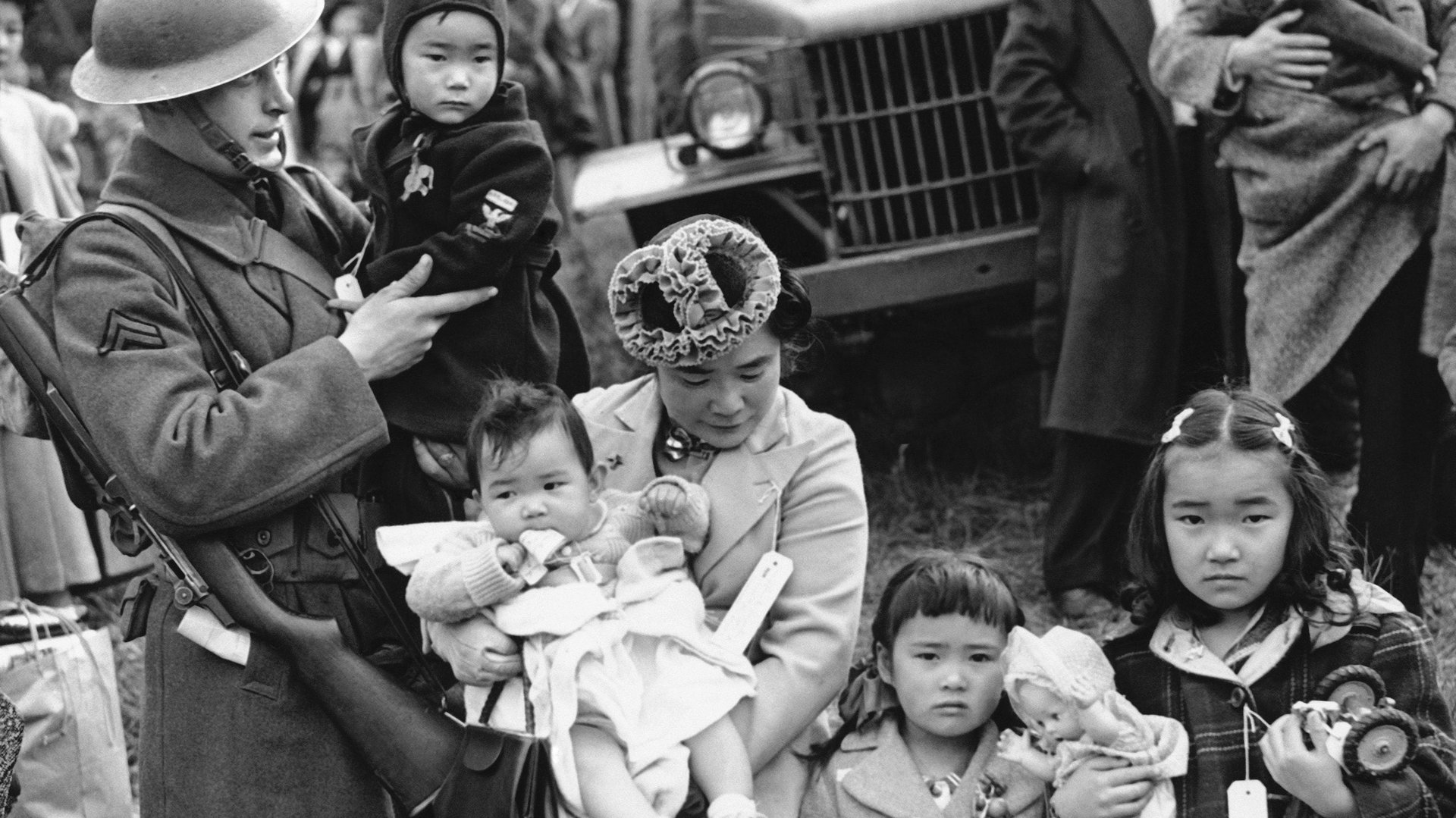

Just before 8 am on December 7, 1941, two waves of Japanese planes pierced the sky over Pearl Harbor, raining bombs on the US naval base there and killing 2,400 Americans. The next day, US president Franklin Roosevelt asked Congress to declare war on Japan. It took fewer than three months for Roosevelt to stretch the contours of “enemy” beyond the bounds of nationality, or even citizenship, to include a whole race.
Japanese Americans were not a threat to national security—a fact that two secret investigations commissioned by Roosevelt himself confirmed, along with the US Justice Department, the FBI, and military intelligence. But within a few months, the Roosevelt administration had created the War Relocation Authority, charged with rounding up and interning “all people of Japanese descent” on the West Coast. At least 110,000 people of Japanese ancestry—more than two-thirds of whom were US citizens—were incarcerated in military camps based exclusively on their ethnicity, in violation of their constitutional rights.
This ugly chapter of history is an ominous reminder of the combustible nature of the forces roiling Donald Trump’s presidency: public fear, ethnic scapegoating, political expedience, and disdain for civil liberties. But what’s frequently overlooked in the popular narrative of Japanese internment is the role of racialized economic anxiety in drumming up support for the mass incarceration, as Sarah Taber, an agriculture professional specializing in farm management, highlighted in a recent viral Twitter conversation. It wasn’t just straightforward xenophobia or blind fear that prompted Roosevelt administration to order the incarceration of Japanese Americans. White farmers, threatened by Japanese Americans’ success in agriculture, also played a crucial role.
The economics of racial resentment
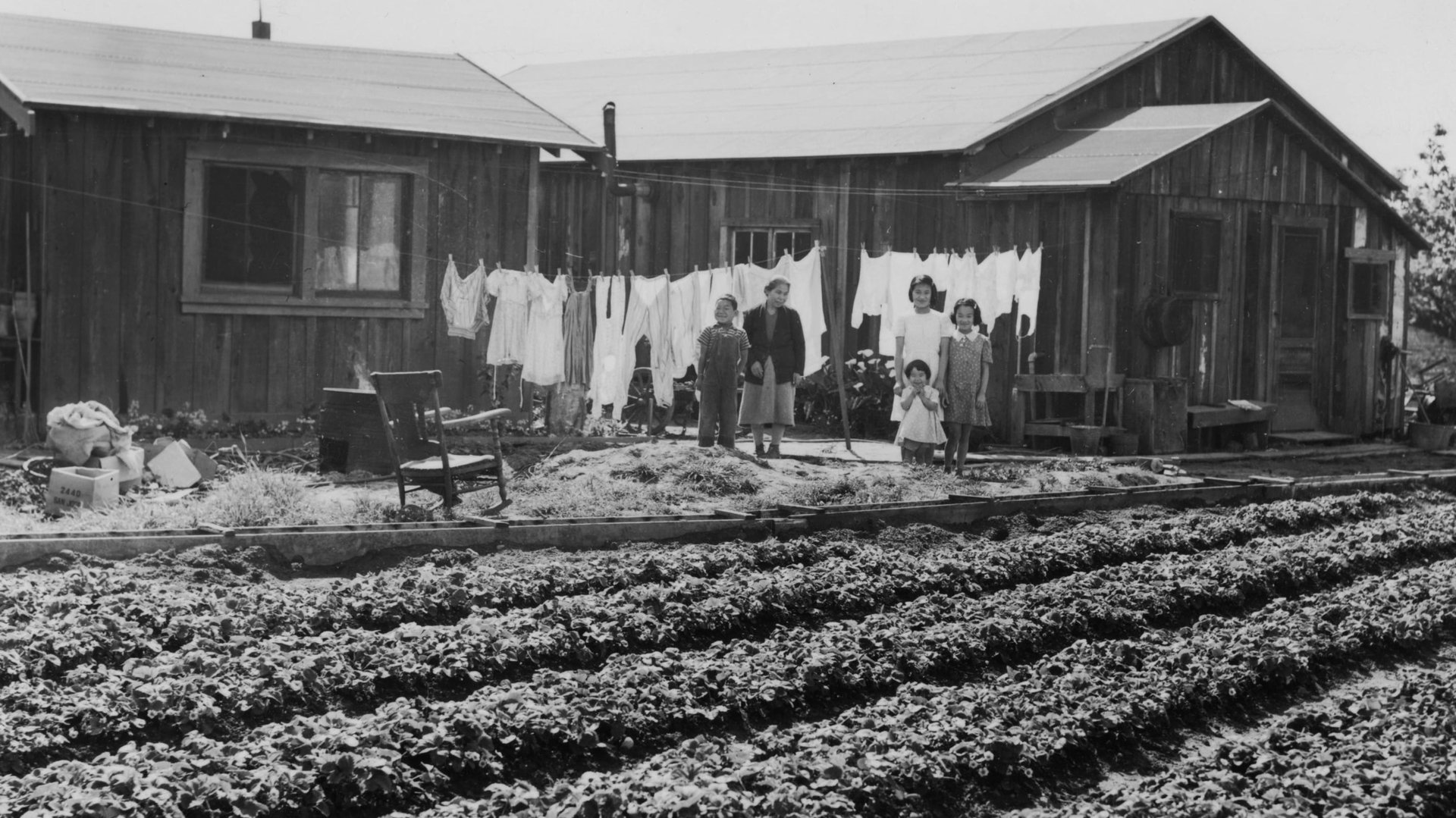
Of course, it’s telling that German- and Italian-Americans weren’t rounded up en masse, despite the fact that Germany and Italy were also America’s enemies during World War II. The “yellow peril” prejudice was clearly a powerful force pushing politicians to call for Japanese American internment. This attitude can hardly be more crisply articulated than by the US army’s West Coast commander, Lt. Gen. John DeWitt. “In the war in which we are now engaged racial affinities are not severed by migration,” he wrote in a report in 1941. “The Japanese race is an enemy race and while many second and third generation Japanese born on United States soil, possessed of United States citizenship have become ‘Americanized,’ the racial strains are undiluted.”
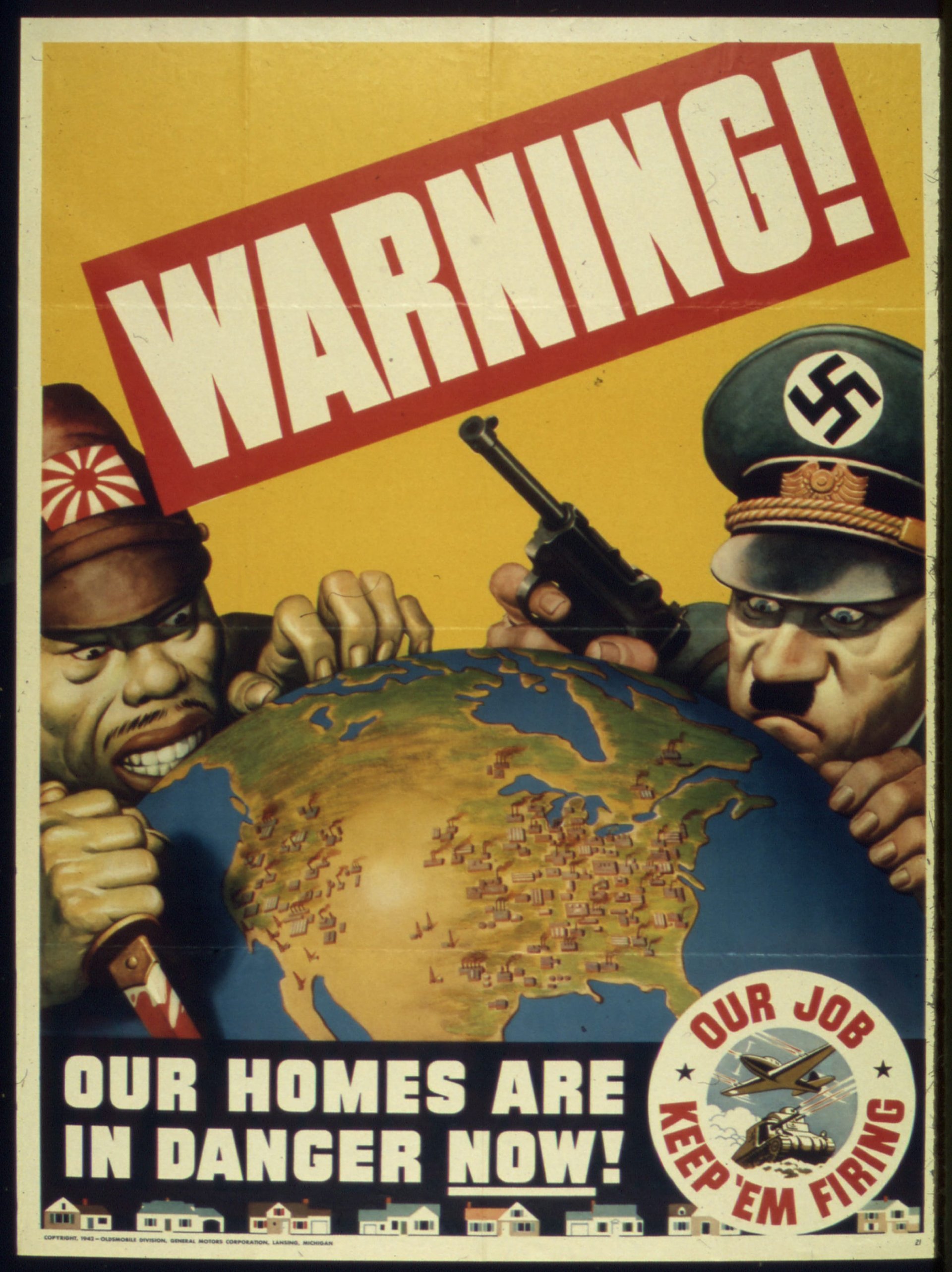
But business interests also played a crucial role in determining the government’s mistreatment of Japanese Americans. In spite of agricultural land-ownership barriers put in place to protect native-born farmers, as of 1940 some 45% of employed Japanese Americans in West Coast states were farmers, according to a 1982 report by the US government’s Commission on Wartime Relocation and Internment of Civilians. The report concluded that resentment from white West Coast farmers provided part of the impetus for mass incarceration of Japanese descent. As AV Krebs, director of the Corporate Agribusiness Project, wrote in the Washington Post in 1992, “Based on an accumulation of evidence, we now know that the government’s action was partially initiated by California corporate agribusiness interests hoping to satisfy their own lust for land while ridding themselves of competition from the state’s most productive family farms.”
Take, for example, Austin Anson, a California farmer and head of the influential Salinas Vegetable Grower-Shipper Association. Hours after the Pearl Harbor attack, Anson headed to Washington, where he wove tales of Japanese-American sabotage, urging the feds to evacuate people of Japanese descent.
His motives were plain enough. “We’re charged with wanting to get rid of the Japs for selfish reasons. We might as well be honest. We do. It’s a question of whether the white man lives on the Pacific Coast or the brown men. They came into this valley to work and they stayed to take over,” Anson told the Saturday Evening Post in 1942. “They undersell the white man in the markets…. They work their women and children while the white farmer has to pay wages for his help. If all the Japs were removed tomorrow, we’d never miss them in two weeks, because the white farmers can take over and produce everything the Jap grows. And we do not want them back when the war ends, either.”
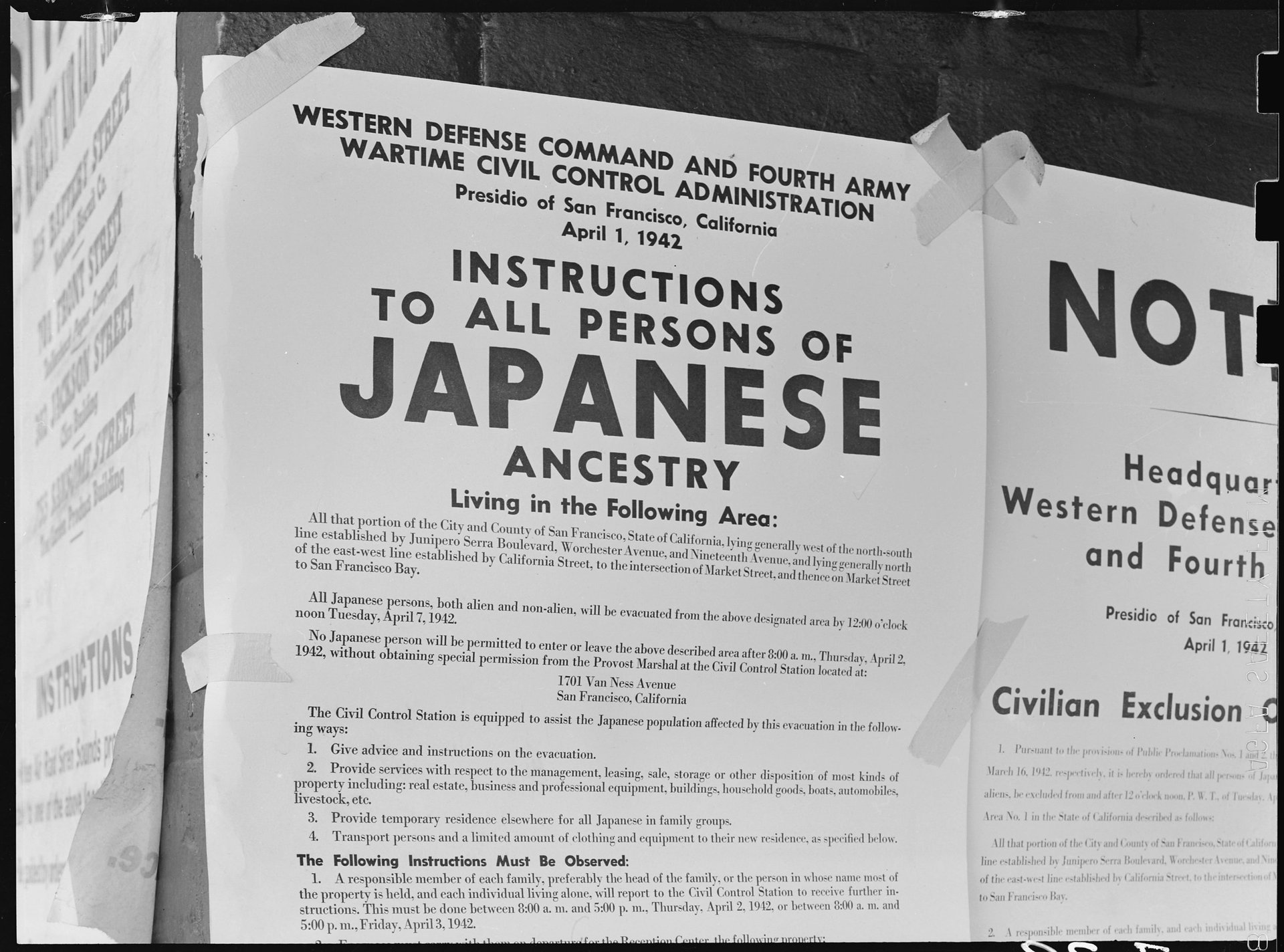
Seen through a tribal lens, it’s not hard to understand this resentment. The economics of West Coast farming did seem to cleave eerily along ethnic lines—and not at all in favor of “the white man.” Despite bans on land ownership, citizenship, and immigration—passed partially in response to earlier white farmer agitation—Japanese-Americans succeeded in farming in a way West Coast white farmers simply didn’t.
A new way of farming
To understand the factors that led to the racialized rift in West Coast farming, it’s necessary to understand why Japanese immigrants turned to farming in the first place. The initial rush of Japanese immigrants to California took place in the first decade of the 1900s. The Meiji Restoration’s opening up of Japan to global markets had created economic turmoil in their home country, driving waves of emigration. Meanwhile, across the Pacific, completion of the national railroad network and advances in railroad car refrigeration techniques drove demand for Californian fruits and vegetables from the rest of the country. At the same time, a ban on Chinese immigration and the shift of white workers into manufacturing meant that the country needed more farmers to supply Americans with “truck crops” like strawberries, celery, and peppers.
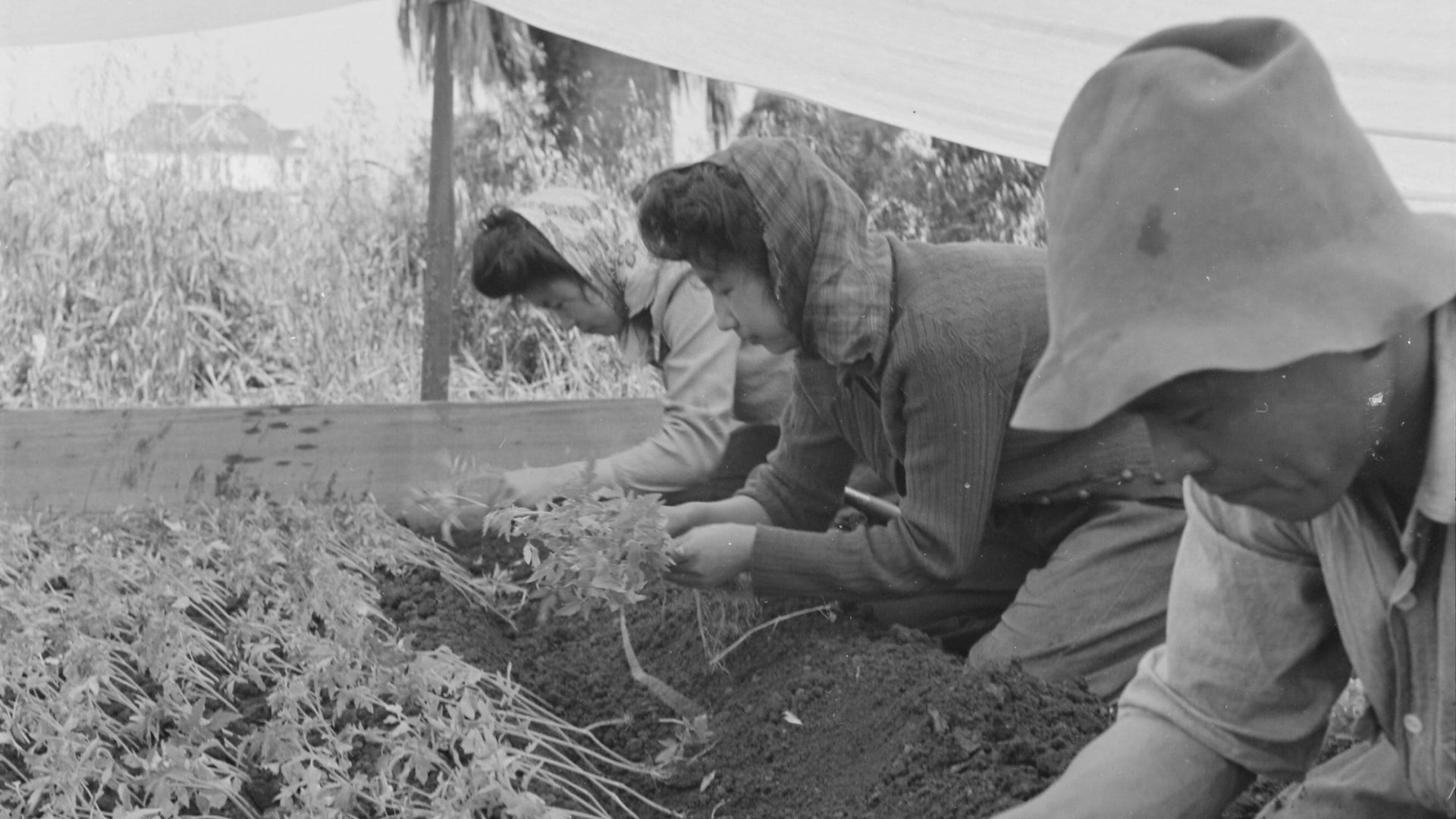
Japanese immigrants filled the void. As historian Ronald Takaki details in his book, A Different Mirror, most had been farmers back in Japan, where they followed generations of ancestors in working small plots that required intensive labor. But in the US they also had limited job options, facing open discrimination from white people in industrial labor markets. By 1942, the year Roosevelt ordered their removal, Japanese Californians alone produced as much as 9% of the nation’s truck crops, according to US department of agriculture report to Congress (pdf).
“It was, in part, the food production of Japanese America that made possible the dramatic growth of the West Coast population from 2.4 million in 1900 to 9.7 million in 1940,” writes Roger Daniels, a pioneering scholar of immigration, in Asian America: Chinese and Japanese in the United States since 1850. “Earnings from the shipments of their produce out of the region clearly made a significant contribution to regional economic growth.”
In 1940, the average value of Japanese American-run farms was $280 per acre, according to the 1982 US government report. That compared with an average of $38 per acre for all farms.
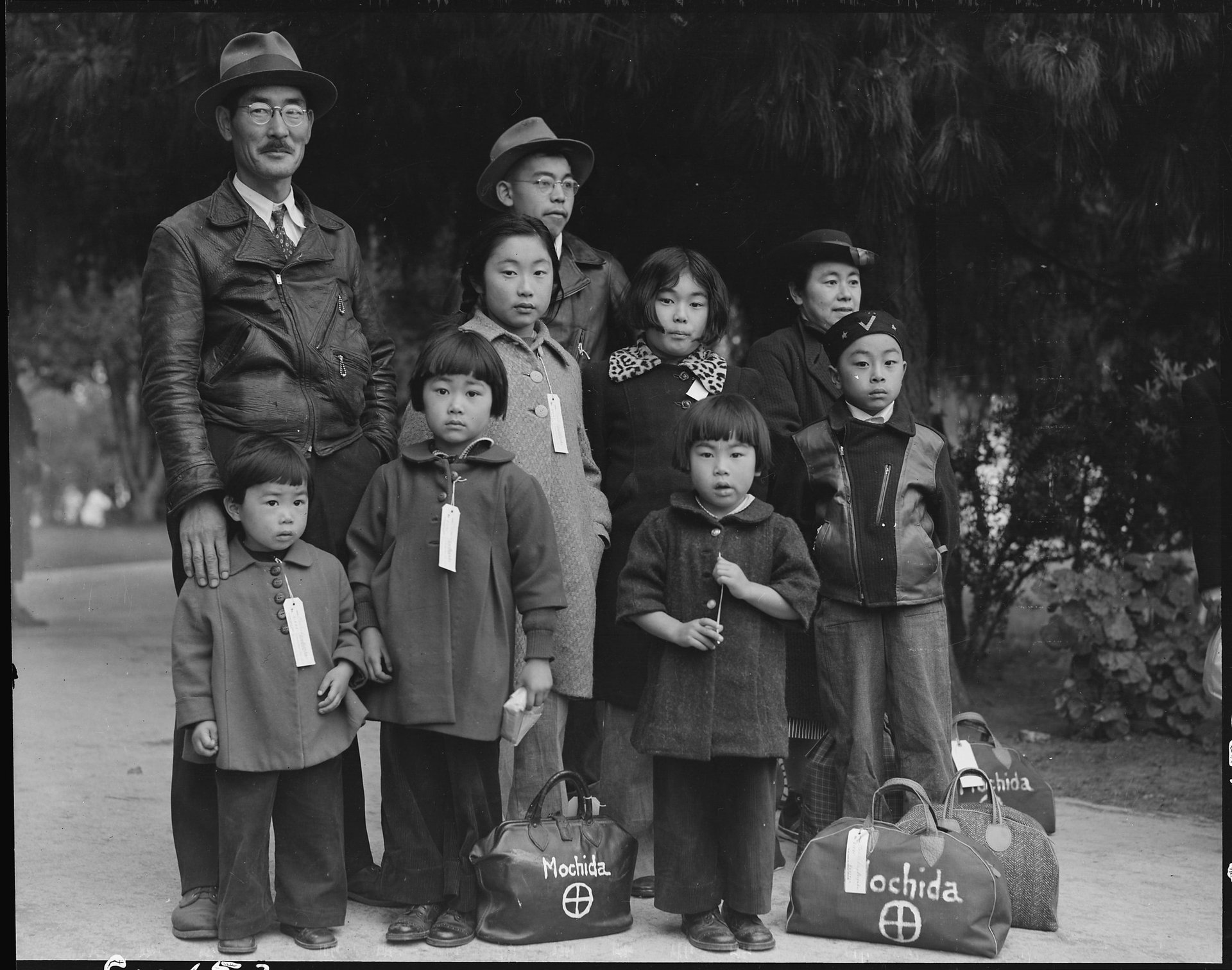
Why were Japanese American farms so much more productive? Japanese Americans farmed differently from their (mostly) white fellow farmers: they grew different crops, on different types of land, using different techniques. ”The [Japanese immigrant] farmers generally did not replace whites, despite such allegations by anti-Japanese propaganda,” writes Roger Daniels, a pioneering scholar of immigration, in Asian America: Chinese and Japanese in the United States since 1850. Instead, “they opened up new lands with their labor-intensive, high-yield style of agriculture as opposed to the resource-intensive, low-yield agriculture characteristic of American farming.”
Their success in certain crops is truly astonishing. Japanese American farmers raised at least half of California’s artichokes, snap beans, cauliflower, celery, cucumbers, garlic and many types of onions, as well as at least a quarter of asparagus, lima beans, cabbage, cantaloupe, carrots, and lettuce, according to the USDA report. They also dominated in strawberries, apples, peaches, and sugar beets.
Ripple effects
White farmers wanted to eliminate the competition. The consequences of their actions would have a significant impact not only on Japanese Americans, but on the entire country’s food supply and economic welfare.
When Japanese-Americans were ordered to concentration camps, the forced removal of the backbone of so many West Coast crops dealt a big blow to America’s agricultural output. In 1942, Japanese Californians were expected to produce 40% of the truck crops needed for the war effort, quotas set by the US government—including half the quota for canning tomatoes and 95% of that for fresh snap beans. Those that hadn’t yet been evacuated were threatened to be charged with sabotage if they neglected their crops, according to the CWRIC report.
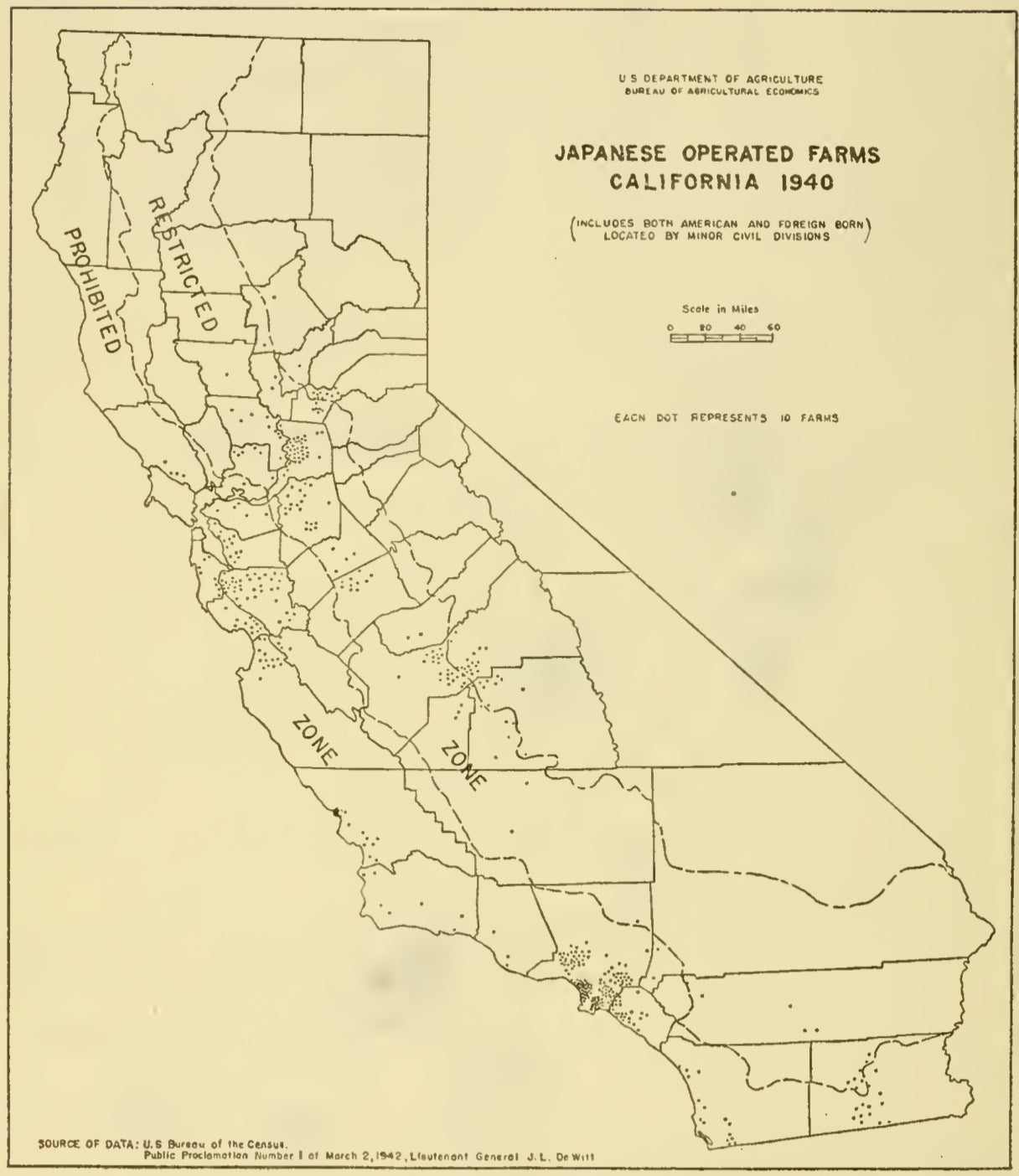
Thanks to the order, “shortages in many commodities developed and prices sky-rocketed to almost unheard of values,” said the managing secretary of the Western Growers Protective Association at the end of 1942, as quoted in the US government commission report. “This, coupled with increased buying power in practically every district of the US, also brought to the growers and shippers most satisfactory prices on almost every commodity shipped from California and Arizona.”
This was good news for the comparatively few farmers who either competed with Japanese-American farmers or gained access to their farms. But higher prices didn’t help most Americans.
“Reduction in the supplies of some crops in which Japanese have specialized will be felt more at the middle class dinner table than in the food-for-freedom program,” wrote the USDA economists in their 1942 Congressional report. “Strawberries, almost all of which are grown by Japanese, will be missed by many consumers.”
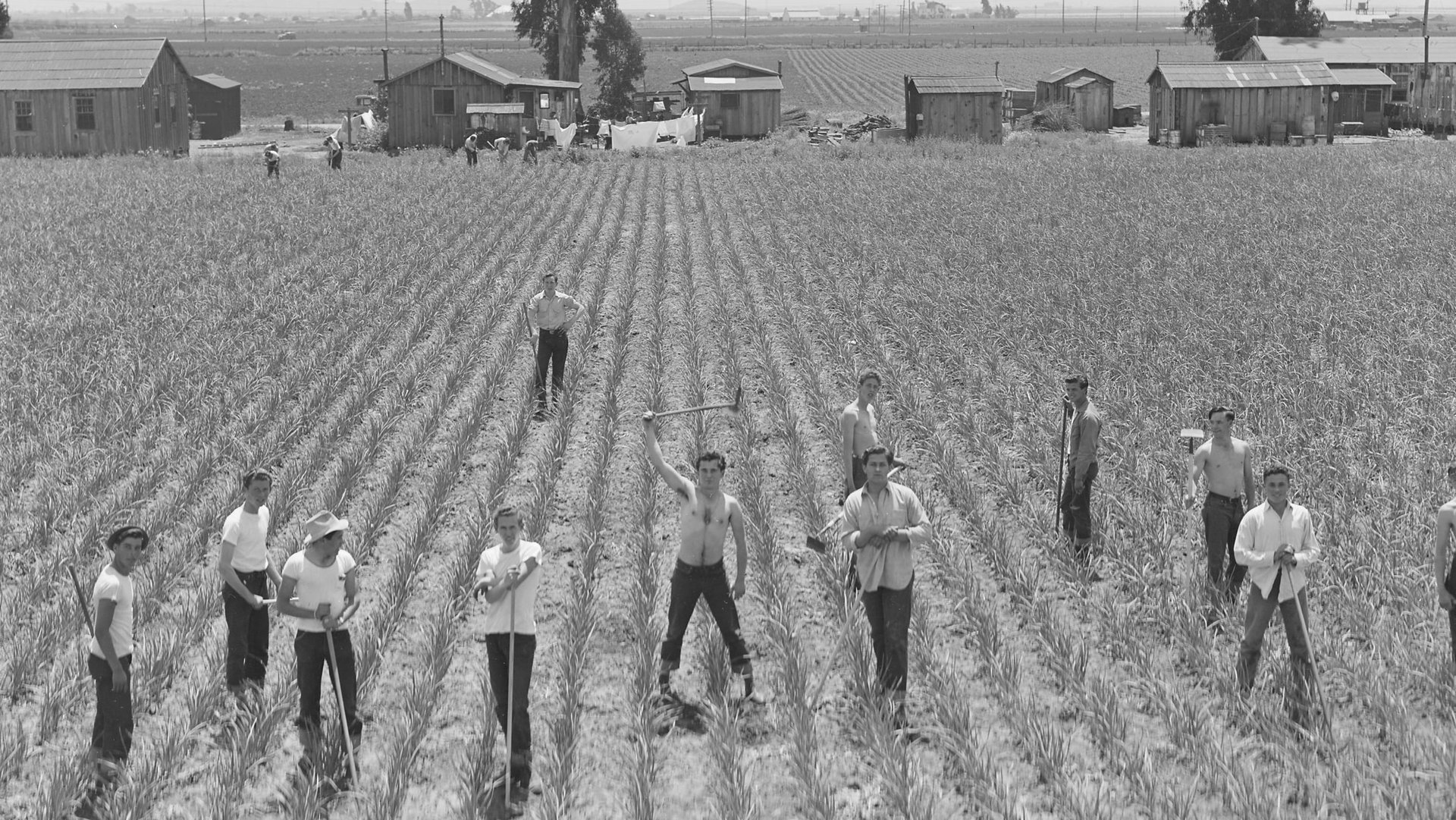
It also wasn’t good for the war effort. Without Japanese American farmers, the US experienced shortages of tomatoes, carrots, green peas, snap beans, and onions needed to feed US troops. As a result of the agriculture shortages, the government encouraged families to grow their own vegetables, known as “Victory Gardens,” notes Taber, the farm management professional who called attention to this phenomenon. As the Orange County Register reports, rural Californian schools changed their school year at the government’s request so that children could fill in the gap left by tens of thousands of Japanese American farmers during harvests, touting the policy as “Victory Vacations.”
The price of America’s dabbling with totalitarianism was considerable. The policy unquestionably upended the efficient use of valuable land and capital. The more than 6,100 farms operated by Japanese Americans on the West Coast were worth $72.6 million ($1.3 billion in 2017 dollars), according to the US government commission report.
The effects of the group’s economic dislocation lingered. Twenty-five years after the internment camps, Japanese-American men’s earnings were between 9% and 13% lower than they should have been, according to a 2005 study (paywall). Some of the Japanese American farmers eventually had their property returned to them, or received another form of compensation. But most didn’t. Many families wound up with nothing more than what they had managed to carry from their homes. Under the Japanese-American Evacuations Claims Act, those wronged claimed at total of $148 million between 1948 and 1965; the US government settled only $37 million. People of Japanese descent lost between $149 million and $370 million (in 1945 dollars) in income and property that was not compensated under that act, according to the US government’s 1982 report. (In 1988, the US government officially apologized and offered $20,000 to internment camp survivors.)
The cost of this effort was all the more remarkable given that it caused great harm and provided Roosevelt and the entire American public with exactly zero benefits. During the war, no Japanese Americans were ever convicted of serious spying charges.
Roosevelt will forever be known for the famous line from his 1933 inaugural address, “The only thing we have to fear is fear itself.” But the quote, as it’s often repeated today, is incomplete. Roosevelt explains that the fear he warns against is the “nameless, unreasoning, unjustified terror which paralyzes needed efforts to convert retreat into advance.” As the experiences of American immigrants in the past and present show, fear doesn’t just paralyze; it can also provoke blind, unthinking action. As so many Japanese Americans learned in 1942, the results can be just as scary.